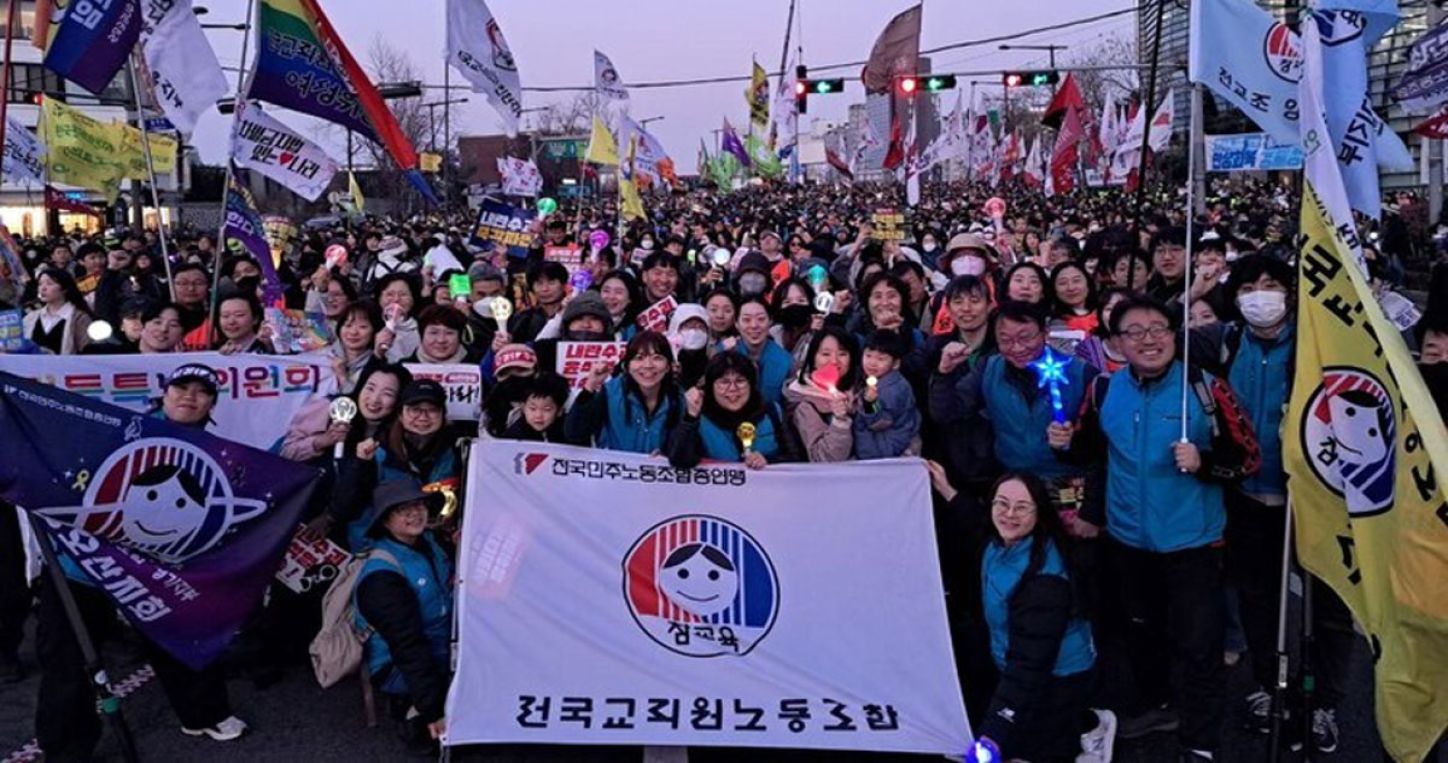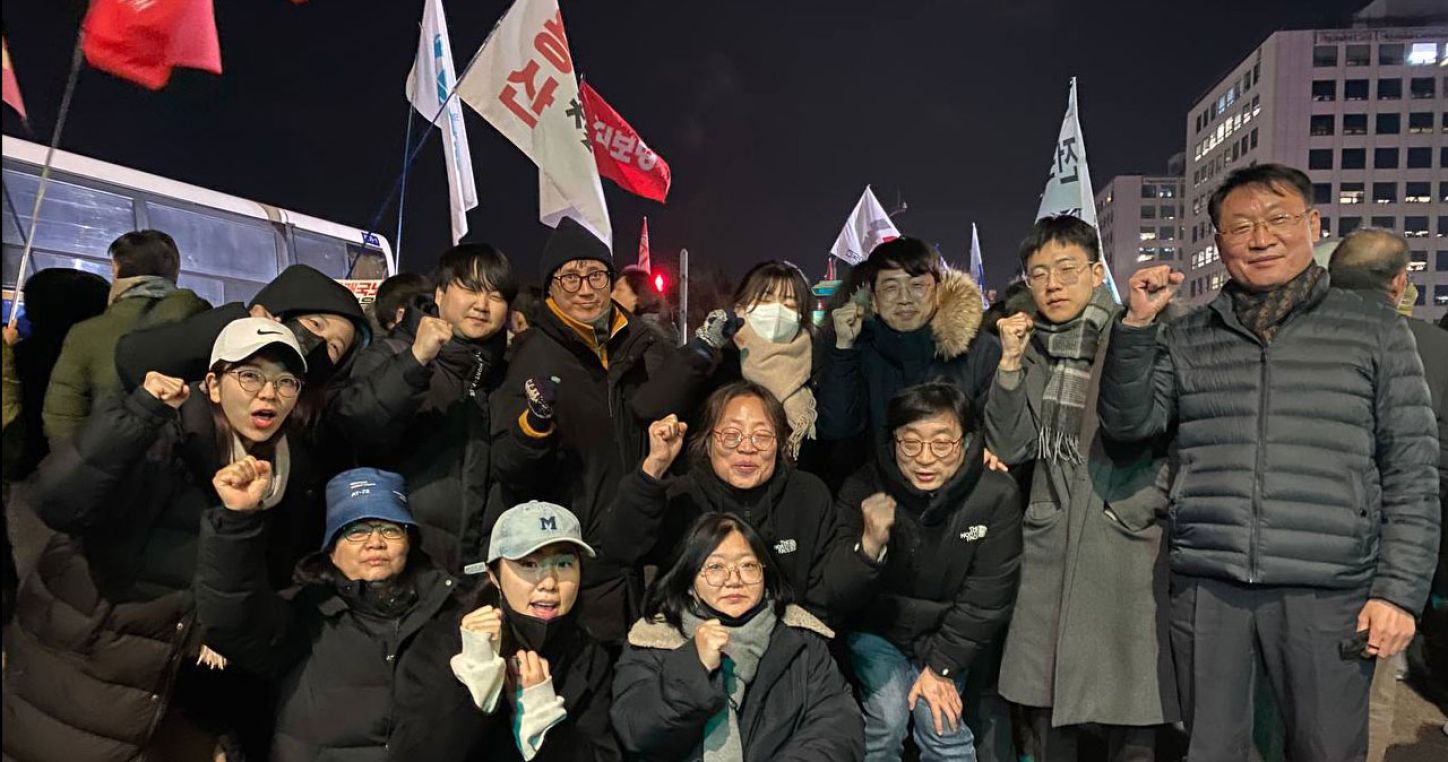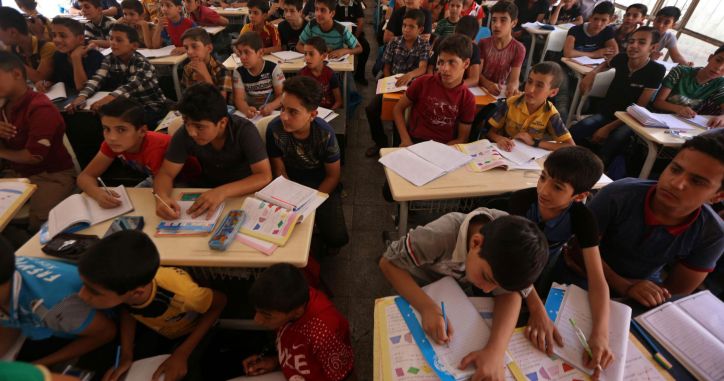From South Korea to Uruguay, Togo and the United States: Online and offline communications drive union campaigns
The role of teachers in stopping an impending coup in South Korea, how they approach online organizing in the U.S. and how Uruguay used the Go Public! Fund Education campaign to successfully mobilize during a presidential election, were some of the themes addressed during the most recent meeting of Education International's communications network (ComNet).
The network, which brings together communicators from EI member organizations, also addressed issues in Artificial Intelligence, how unions are building alliances, and the importance and role of offline organizing to engage and mobilize members.
Artificial Intelligence cannot replace teachers
EI General Secretary David Edwards addressed some of the challenges posed by AI in education, but also for communicators in a world of media overload, fake news, and tech companies controlled by billionaires.
"AI has been spoken about as a panacea, the famous AI teacher, the chatbot,” he said, emphasizing that “one of the challenges we have as we try to talk about education into the future, with people who are not necessarily in our movement or with educators and parents, is that piece about humanity and what education is as a relationship, the relationship between the student and the teacher that really cares about students, learning whether or not they have had breakfast when they have come in, or if they have lost a parent, or if their home has been bombed, or if they are a new refugee or a newly arrived person in a strange land, what language they speak.”
For the EI leader, “it is important that we start bending the conversation away from just information, but really lean into the issues around ethical education, socio-emotional learning, really caring about each other.”
He also acknowledged that “it is important for us, as communicators in education unions, to be able to sort of push back on this idea that teaching itself is an old profession that now needs to be redone with the technology.”
Mentioning the importance of building alliances with students, parents, and different groups of allies, he further underscored the need for tools and reference documents to keep everyone informed and able to cite evidence.
Standing up against authoritarianism in South Korea
Hyunsu Hwang, International Secretary of the Korean Teachers and Education Workers' Union (KTU), recounted the union's resistance and relentless mobilization against the attempted coup by former President Yoon Suk Yeol, when he sought to impose martial law December 3rd, 2024. The massive mobilizations of the Korean people were able to stop the authoritarian threat to their democracy.

On April 4th, 2025, a Constitutional Court's ruling backed up the impeachment of the President by the National Assembly. “I had to teach my students at the high school, so I could not join the street demonstrations at that moment, but I watched the ruling with my students in the classroom,” Hwang reported. “We restored the Korean democracy. There is a long way to go, but this achievement is successful and remarkable.”


Challenges and opportunities of online organizing
Also confronted to an authoritarian political power, the Trump Administration in the United States, Kate Hilts, Senior Digital Strategist at the Center for Communications of the National Education Association (NEA), presented on the challenges and opportunities of online organizing. "We have definitely seen an uptick in the kind of disinformation, right wing, trolling, etc., across all of our social media platforms," she said. Hilts emphasized the importance of not engaging with trolls and creating community management strategies to ensure that messages reach members without being drowned out by disinformation.
“We found that social media is rarely sufficient for mobilizing people on the ground or getting them to attend an event. It is one of an arsenal of things that we do when we are building for a rally,” she noted.
Offline communications in Togo
Lorie Akilè-Essofrom, General Secretary of the Fédération des Syndicats de l'Éducation Nationale (FESEN) in Togo, spoke about the offline communications used to highlight the Go Public! Fund Education campaign in his country.
Akilè-Essofrom explained that union leaders lead in-person visits to each region to mobilize the rank and file across the country. They prepare relevant materials, like the lastest education measures and news, to share in the different school jurisdictions. "We have WhatsApp platforms to facilitate sessions and online conferences with branch leaders who replicate the training acquired at the peer level when they meet on the ground" he detailed.
“When we have a representative in a unionized school, they talk to their peers about the merits of unionizing. We also request time slots of 30 minutes to 1 hour to address teachers during education meetings, teachers’ councils or a pedagogical day,” he added.
In addition, the union leads an initiative where experienced teachers work with aspiring educators to help them prepare for their exams to get their teaching certificate or license. This ensures outreach to a new generation of teachers.
Campaign strategies bringing about political change in Uruguay
Another aspect of union communication includes adapting campaigns and demands to a national context. Daniel Manchín of the Federación Nacional de Profesores de Enseñanza Secundaria (FENAPES) in Uruguay shared insights on the Go Public! Fund Education campaign in Uruguay.
" Uruguay was one of the first countries to join the campaign," Manchín explained. Union communications in media and social platforms around the campaign were adapted to the Uruguayan context and electoral process, which culminated with the election of a history teacher and union member to the presidency.
Manchín detailed the initial campaign efforts by FENAPES, which aimed to present a more transparent and less combative image of the union. However, the political climate demanded a shift in strategy, with the right-wing coalition government implementing education measure to increasing the privatization of public education.
The "Transformation of Terror" campaign used horror movie icons to critique the government's educational reforms – likening them to monsters – and highlight their negative impacts on public education. This was followed by a campaign that used familiar educational report card imagery to communicate the negative outcomes of the reforms.

Manchín emphasized the use of humor in the campaigns to make the messages more engaging and accessible to different audiences, particularly students. The campaign was also integrated with cultural and sports events, such as supporting carnival groups and sponsoring soccer and cycling races, to reach a wider audience.

Scaling up the campaign in Arab countries
Najat Ganay, member of the National Council of the Syndicat National de l'Enseignement-Fédération Démocratique du Travail (SNE/FDT) in Morocco and member of the Committee of the EI Arab Countries Cross-Regional Structure (ACCRS), reported on the last biennial ACCRS Conference held in Cairo, Egypt. Ganay highlighted that participants came up with practical recommendations for scaling up the campaign to Arab countries and reported on the successful efforts to obtain a new status for teachers in Morocco.
She added that delegates discussed ways to enhance partnerships with the Global Partnership for Education, the Arab League and Education Cannot Wait.
Advocacy and International Relations in Zimbabwe
Daisy Tendai Zambuko, Communications and Advocacy and International Relations of the Zimbabwe Teachers' Association (ZIMTA), shared insights on the Go Public! Fund Education campaign in Zimbabwe. “We were engaging particularly with policymakers, i.e. parliamentarians, the minister of Education and the Minister of Finance. We want to participate in their meetings and give advice on how they could increase funding for public education, because we have so many ideas on how it can be done," she said.
Zambuko emphasized the need to increase funding for education and improve working conditions for teachers: “The Government is talking about a deficit of 8,000 teachers, in primary, secondary, and higher education institutions, and they are not giving us any deadline of when these teachers will be employed, because they are saying they do not have the money.”
ZIMTA also did a series of social media portraits for Women's Month in March. “We visited various schools, especially those with many women in them, and we asked them if they could give us some ideas of what can be done for women in education. And they were happy to share.”
Updates on communications and campaigns in EI regions
Participants also received updates on communications and campaigns in diverse EI regions.
Thomas Bouïssaguet, Communications Officer at the European Trade Union Committee for Education (ETUCE), provided updates on the ComNet Europe relaunch, the upcoming new ETUCE website and newsletters, and the development of the EI Go Public! Fund Education campaign in Albania and Tajikistan.
Kojo Asiamah Addo, Project Officer for Campaigns and Communications at the EI Africa office, outlined the objectives of EI Africa ComNet, emphasizing the importance of facilitating the seamless exchange of new ideas, resources, and best practices in communication strategies, to enable member organizations to effectively engage with their stakeholders, including educators, policymakers, partners, and the general public.
Alina Rodríguez and Bolívar Rojas, Communications Officers at the EI Latin America office, discussed the advocacy campaign for public education in the region. Rodríguez highlighted the incorporation of a gender perspective into the Go Public! Fund Education campaign via regional networks. Rojas introduced the “Handbook for the Development of a Communication Strategy” to encourage member organizations to debate and define a communication strategy that allows them to guide their actions in this area.





